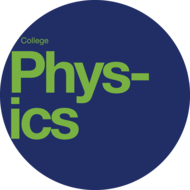
(View Complete Item Description)
The BIIG problem-solving method is unique in that it forces us to concentrate on decoding a real-world word problem completely into meaningful parts and aids us in finding and applying the right formula to easily arrive at the correct solution. As desired, it places less emphasis on the memorization of factual detail and more emphasis on the understanding of concepts. Evidently, this method is beneficial in many ways as it aids students in honing skills in critical thinking, logical approach and attention to detail. As a method for organizing information it helps students avoid errors and sets them on a path to succeed. As long as the numbers are “buddied up” with their units, “identified” by the appropriate variables, “isolated” within the context, and the answer is presented “gourmet”, or explained in terms of the original question, finding a solution to any complex problem will become seamless, understandable and enjoyable. This innovation in science education fosters a passion for learning and serves as a foundation for a new paradigm for problem-solving in any discipline of science worldwide.
Material Type:
Assessment,
Student Guide,
Teaching/Learning Strategy
Author:
C N Hiremath





